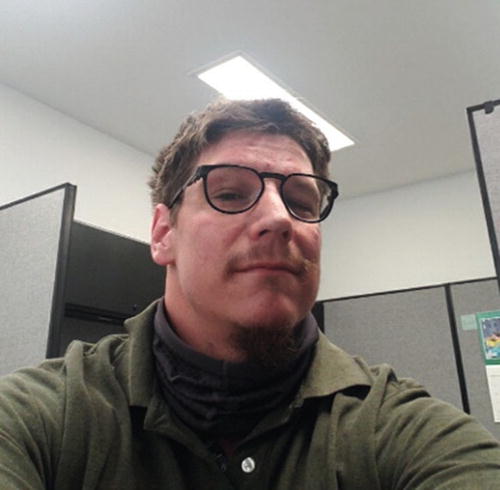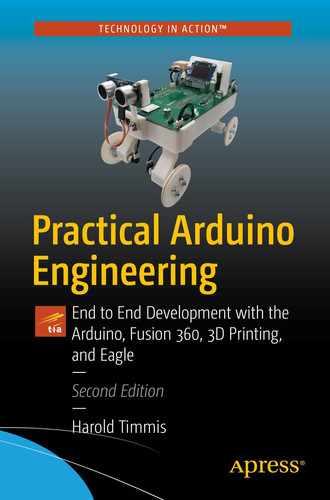Practical Arduino Engineering
End to End Development with the Arduino, Fusion 360, 3D Printing, and Eagle
2nd ed.
This Apress imprint is published by the registered company APress Media, LLC part of Springer Nature.
The registered company address is: 1 New York Plaza, New York, NY 10004, U.S.A.
To my friend AJ. I love you and miss you. May you rest in peace.
The Engineering Process
An Arduino Software Review
3D Modeling with Autodesk Fusion 360
PCB Design with Autodesk Eagle
First Section Final Project
Final Project PCB
Final Project 3D Model
Final Project Software
Final Project Putting It All Together
Once completed, you will have a unique robot that you can modify and elaborate on for future projects. So without further ado, let’s get started with the engineering process.
I would like to thank my beautiful wife Alexandria for being very patient with me while I wrote this book. I also want to thank my daughter Natalie for inspiring me every day. As always, I want to thank my mom (Bonnie), dad (George), sister (Amanda), and brother (George) for always believing in me.
I want to thank the Apress team for helping me complete this book. It was rough with COVID, but we finally finished the book! I want to personally thank Natalie Pao and Jessica Vakili. They helped me navigate through this process again effectively and efficiently. Also, I want to thank my Technical Editor Sai Yamanoor. His thoughts were insightful and made this book much better.
I want to thank the Arduino Team for developing a truly revolutionary product. I want to thank SparkFun, Pololu, PCBWay, Autodesk, Simplify3D, National Instruments, and Adafruit. You all make making so much more enjoyable and attainable.

, since he was a small child, has fostered a curiosity for technology, taking apart everything in his parents’ house just to see how it all worked. This fueled his thirst for knowledge of computer science, programming, and its uses. He has worked with LabVIEW and Arduino for the past 13 years. During that time, he has been involved in several professional projects using LabVIEW, as well as many hobbyist projects utilizing both Arduino and LabVIEW. Harold attended the Florida Institute of Technology, where he studied computer engineering and was introduced to LabVIEW and Arduino. Later, he worked at the Harris Corporation and General Electric, where he created several LabVIEW projects for trains and became very interested in the Arduino, data acquisition, and control theory.
is an embedded systems engineer working for an industrial gases company in Buffalo, NY. His interests, deeply rooted in DIY and Open Source Hardware, include developing gadgets that aid behavior modification. He has published two books with his brother, and in his spare time, he likes to contribute to build things that improve quality of life. You can find his project portfolio at http://saiyamanoor.com .
